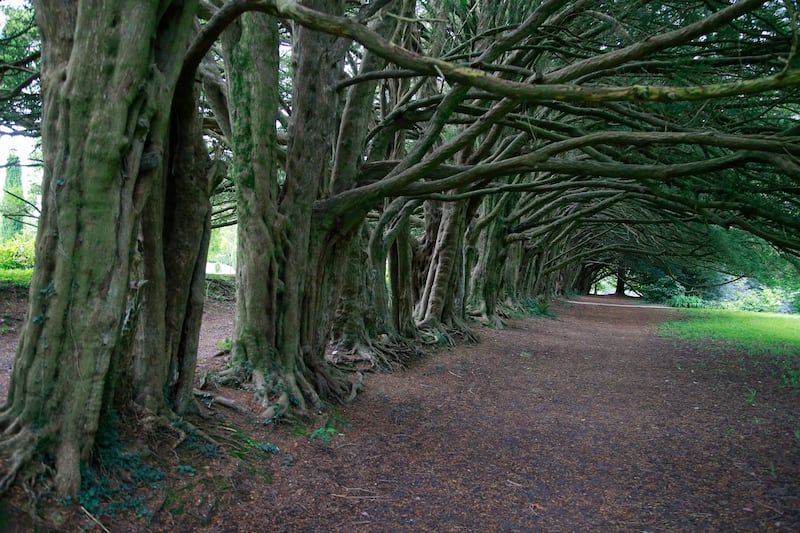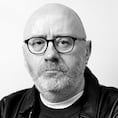Some 20 years ago, I was invited round to Sir Ken Adam’s house in Knightsbridge for a conversation about a new book on his work as a production designer. I knew I was in the right place when I saw his Rolls-Royce parked outside the grand stucco porch.
One of only three German-born airmen to fly for the RAF in the second World War, Adam had long been recognised as a legend of the industry. Over a 50-year career, he worked on every variety of picture – from Addams Family Values to Chitty Chitty Bang Bang – but Adam was, by then, resigned to the awareness that, in any interview, the conversation would quickly touch upon James Bond and Stanley Kubrick. He made seven Bond films. The two pictures he made with Kubrick were among the most striking looking ever made: Dr Strangelove and Barry Lyndon.
I remember approaching the subject of the latter film with some caution. Half a century after its release, Barry Lyndon, much of which was shot in Ireland, remains shrouded in myth and controversy. Is the lavish 18th-century epic a folly or a masterpiece? Did the IRA really chase Kubrick away? Was the pressure on the crew so great? It was said the stress of dealing with Kubrick’s obsessions on that film – shooting by candlelight, replicating 19th-century paintings – accelerated this former fighter pilot towards (as we then still said) a nervous breakdown.

Adam, who died in 2016, did not balk when I used those words.
“Oh yes, a terrible breakdown,” he told me. “We were working these incredibly long hours. And there was the closeness to Stanley, who was so completely disorganised. We didn’t have a script as such. He had just [photocopied] pages from [William Makepeace] Thackeray’s novel and then discovered that didn’t work; I could have told him that at the beginning.”
This gets at an often-overlooked aspect of Kubrick’s approach. Yes, he was meticulous. But, according to Adam (who would know), that perfectionism was at odds with a lack of structural discipline.
“We were chasing around all day looking for a location and then shooting all night,” Adam told me. “If a scene didn’t work it was, of course, the fault of the location.”

Adam ended up in the care of “a famous Scottish psychiatrist” who told him that, to get well, he would have to “cut the umbilical cord” with Kubrick. When he emerged from care he got a phone call from the director. Kubrick noted how pleased he was that Adam was better and explained that he now wanted the production designer to shoot a second-unit sequence in Potsdam. “That gave me such a shock that the next day I was back in the clinic!” he told Sir Christopher Frayling.
Adam could, reasonably enough, have concluded, on the film’s release in 1975, that it was not worth the effort or the strain on his mental health. Barry Lyndon, adaptation of a short novel by Thackeray, received mixed reviews and was not a financial success.
Pauline Kael, then in her pomp as film critic of the New Yorker, greatly enjoyed revealing her disappointment. “Kubrick has taken a quick-witted story, full of vaudeville turns ... and he’s controlled it so meticulously that he’s drained the blood out of it,” she wrote. “He suppresses most of the active elements that make movies pleasurable.” Charles Champlin of the Los Angeles Times thought it “the motion picture equivalent of one of those very large, very heavy, very expensive, very elegant and very dull books that exist solely to be seen on coffee tables”. The great Derek Malcolm, writing in the Guardian, turned to a cricketing analogy. “It’s half a film,” he wrote. “He is like a batsman trying to score a century without anybody noticing.” Many were unconvinced by Ryan O’Neal’s deadened performance in the title role (domestic viewers still wince a little at his so-so Irish accent).

It would be wrong to suggest the whole world was against it. There were good reviews from Gene Siskel in the Chicago Tribune and Vincent Canby in the New York Times. The Irish Times, on first glance, also caught its brilliance. In his review, Fergus Linehan railed against negative criticism “that misunderstood both the film’s method and purpose”. Linehan went on to place it alongside the likes of The Godfather Part II and Badlands among his 12 best films (on Irish release dates) of 1975.
The Academy of Motion Picture Arts and Sciences nominated Barry Lyndon as best picture in what now seems a contender for the finest line-up in the Oscars’ history. It competed opposite Dog Day Afternoon, Nashville, Jaws and eventual winner One Flew Over the Cuckoo’s Nest. Adam won his second Oscar (an award he thought “ironic” for a film largely set on already existing locations). Yet there was still a sense the film was a grand extravagance that failed to repay the effort demanded of any viewer.
Kubrick’s films often take a long time to settle in with critics and viewers. 2001: A Space Odyssey divided opinion on release in 1968. It is said Rock Hudson sloped out early grumbling “What is this bullsh**t?” as Discovery One made its glacial way towards Jupiter. On Sight and Sound’s 2022 poll to find the greatest films of all time, 2001 landed in sixth place.
[Kubrick] was not a designer, but he knew every technical job: editing, sound, photography. Nobody could say: “This couldn’t be done.” They would have been fired immediately.
— Sir Ken Adam
Kubrick was famously nominated as worst director in the first ever (admittedly idiotic) Golden Raspberry Awards for The Shining in 1980. It was also trashed by Pauline Kael and Roger Ebert before going on to establish itself as one of the greatest of all horror pictures.
As a crisp new 4K restoration of Barry Lyndon arrives in cinemas for the golden jubilee, the early sceptical responses seem as distant and eccentric as the riots at the first night of Stravinsky’s The Rite of Spring. It was the second highest rated Kubrick film on that recent Sight and Sound poll. Five years ago, this newspaper, enjoying itself in the pandemic summer, named it as the best Irish film of all time. The troubled history of its production only adds to the legend.
By the time Kubrick, a middle-class Bronx boy who had begun as a still photographer, came to shoot Barry Lyndon, his forbidding reputation was already in place. Dr Strangelove, 2001: A Space Odyssey and A Clockwork Orange, his three previous films, had all kicked up different degrees of furore. The controversy around that last film (talk of copycat violence eventually led to the director withdrawing A Clockwork Orange in the UK) heaped sombre mystique on overcooked intimations of heroic genius.
The director had originally wanted to follow up A Clockwork Orange with a film on Napoleon, but financing fell through after the failure of Sergei Bondarchuk’s bombastic Waterloo. He then considered a take on Thackeray’s Vanity Fair, but, deciding that book was too huge, settled instead on the same author’s more compact The Luck of Barry Lyndon.
O’Neal, huge in the aftermath of Love Story, secured the title role – an Irish rogue who romances a rich widow after conning his way through the Seven Years’ War – when Robert Redford turned it down. Supermodel Marisa Berenson was to play the moneyed Lady Lyndon.

In 1973 the Warner Bros charabanc arrived to an Ireland which was less accustomed to huge American productions than is now the case. Ardmore Studios accommodated some of the shooting, but it is the location work that really sticks in the brain. Powerscourt House in County Wicklow provided elegant backdrops just a few months before its destruction in a fire. One can also spot Kells Priory in Co Kilkenny, Huntingdon Castle in Co Carlow and Castletown House in Co Kildare. Not everywhere is representing a domestic location. Dublin Castle stands in for the Prussian retreat of Chevalier de Balibari, a grifter (actually Irish) played with majestic oddness by the untouchable Patrick Magee.
Reasonably enough, much attention has gone the way of the technical innovations that characterised a complex production. If you know anything about Barry Lyndon you probably know that John Alcott, who won that year’s Oscar for best cinematography, was required to shoot some scenes solely by candlelight. This ultimately required the adaptation of superfast 50mm Zeiss lenses that had originally been designed by Nasa for use on the moon.
“I was very good friends with Stanley,” Adam told me. “He was not a designer, but he knew every technical job: editing, sound, photography. Nobody could say: ‘This couldn’t be done.’ They would have been fired immediately.”
Adam argued that Kubrick enjoyed his time in Ireland, but he wasn’t sufficiently enamoured to ignore an apparent phone call from the IRA demanding that he leave the country within 24 hours. He was gone in 12.
“Whether the threat was a hoax or it was real, almost doesn’t matter,” Jan Harlan, a producer on the film, later told the Irish Independent. “Stanley was not willing to take the risk. He was threatened, and he packed his bag and went home. And the whole crew went with him.”
Fifty years later, the reputation of Barry Lyndon could hardly be more secure. Elevated by music from The Chieftains, subverted by an ironic voiceover from Michael Hordern, the film winds a sinister mordancy around its overwhelmingly beautiful images. There is a sense throughout of impending loss. None of this can last.
I can’t say if Adam felt it was all worthwhile. It was then 30 years after the fact, but the mental stress clearly still rankled.
“I took all Stanley’s problems on my shoulders,” he said. “And ended up apologising for things that were nothing to do with me.”
The 4K restoration of Barry Lyndon is on limited release from July 18th





















